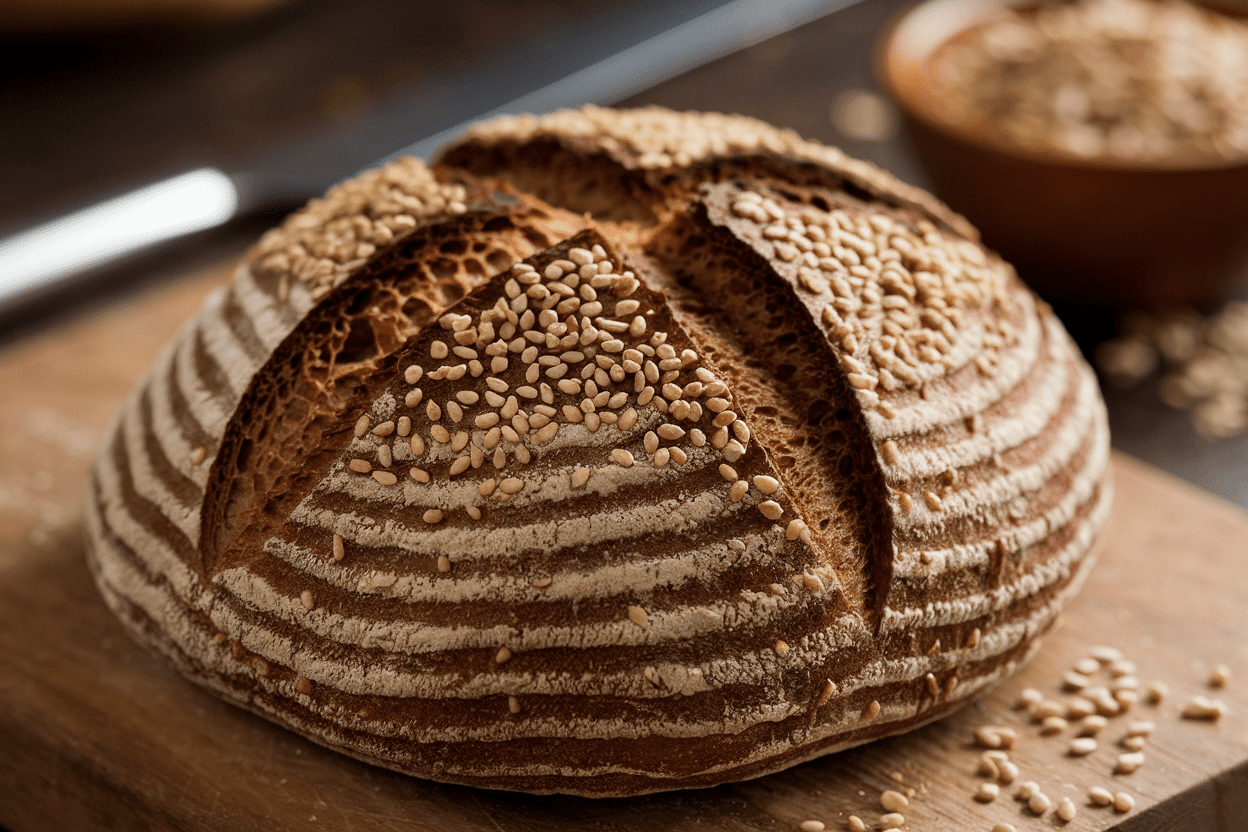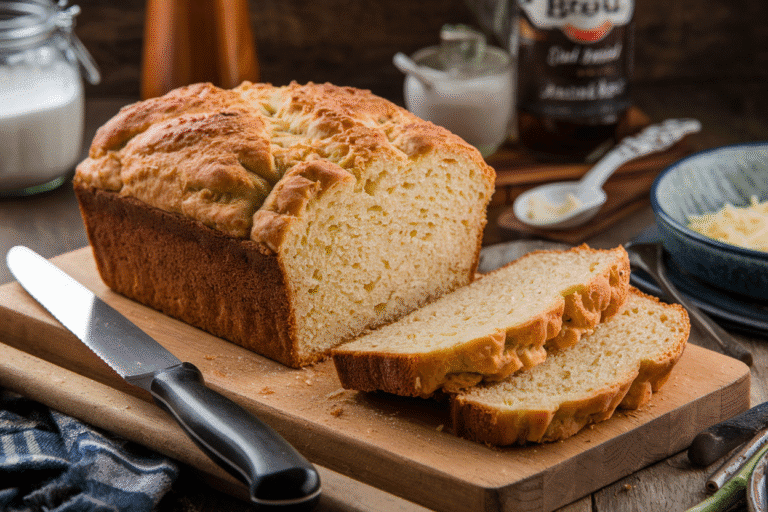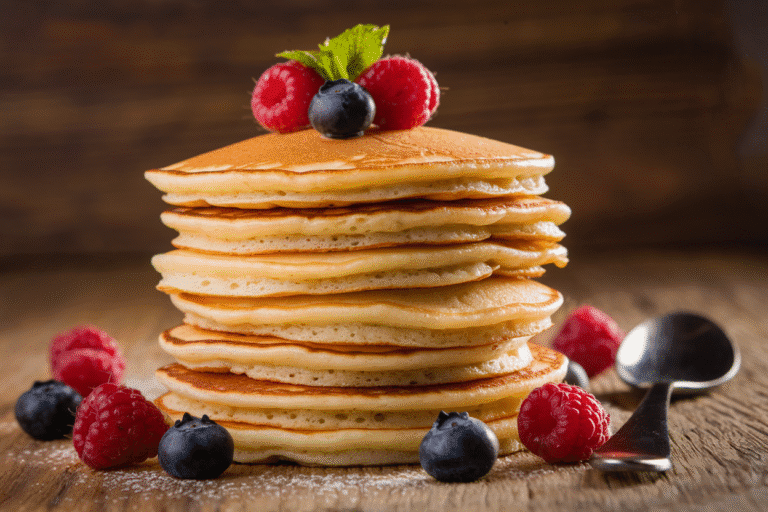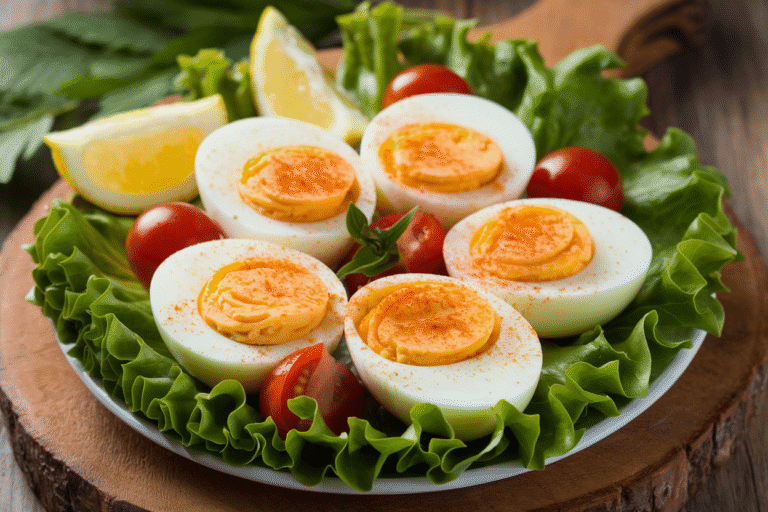The Only Sourdough Rye Bread Recipe You’ll Ever Need (Bold Crust, Tangy Soul, Zero Fluff)
You want a loaf that doesn’t just sit on the counter looking pretty—it demands butter, begs for pastrami, and turns your kitchen into a bakery. This sourdough rye bread recipe delivers a chewy, crackly crust with a deep, malty tang that’s borderline addictive. No sugar bombs, no gimmicks—just strong, flavorful bread that actually feeds you.
You’ll mix, fold, rest, and bake—and end up with a loaf that makes supermarket bread look like a cardboard prop. Ready to flex a bit? Your sandwich game is about to level up.
What Makes This Recipe Awesome
- Flavor with backbone: Rye brings earthiness and a subtle sweetness; sourdough adds tang and depth.
The combo hits that nostalgic deli vibe.
- Great crumb, not a brick: A blend of bread flour and rye flour keeps the loaf structured but tender—no dense doorstops here.
- Naturally leavened goodness: No commercial yeast. Your starter does the heavy lifting for flavor, digestibility, and a longer shelf life.
- Crust that sings: Steam plus a hot start equals a blistered crust that crackles as it cools. ASMR, but for bakers.
- Beginner-friendly rhythm: Simple steps, clear timing, and flexible proofing so you can fit it around real life, not the other way around.
What Goes Into This Recipe – Ingredients
- Active sourdough starter (100% hydration): 120 g (fed and bubbly)
- Warm water: 360 g (around 80–85°F / 27–29°C)
- Bread flour: 350 g
- Medium or dark rye flour: 150 g
- Fine sea salt: 10 g
- Caraway seeds (optional but classic): 1–2 tsp
- Malt syrup or honey (optional): 1 tsp for a hint of sweetness and color
- Rice flour + AP flour for dusting: as needed
Cooking Instructions
- Mix the levain (optional but helpful): If your starter isn’t at peak, mix 30 g starter + 30 g water + 30 g bread flour 4–6 hours before dough time.
Use when domed and airy.
- Autolyse for better texture: In a bowl, combine water, bread flour, and rye flour (hold back salt and seeds). Mix until no dry bits remain. Rest 30–45 minutes.
This jumpstarts gluten and makes mixing easier.
- Add starter and salt: Add the active starter and salt (and malt/honey if using). Pinch and fold until cohesive. Expect a slightly sticky dough—rye does that.
Embrace it.
- Bulk fermentation (3–4.5 hours, 75–80°F): Cover and rest. Perform 3–4 sets of stretch-and-folds every 30 minutes during the first 2 hours. Sprinkle in caraway seeds during the first fold if using.
- Check fermentation: Dough should rise ~50%, look smoother, and feel airy.
It won’t double—rye is modest. If sluggish, give it another 30–60 minutes.
- Pre-shape: Lightly flour the surface. Turn out dough, gently shape into a round with a bench knife.
Rest 15–20 minutes uncovered. This relaxes gluten for a tighter final shape.
- Final shape: Shape into a taut boule or batard. Light flour your proofing basket (rice flour + AP mix works great).
Place dough seam-side up in the basket.
- Final proof: Option A (same day): 45–75 minutes at room temp until slightly puffy. Option B (recommended): Cover and refrigerate 8–16 hours for cold proof—better flavor and easier scoring.
- Preheat: Place a Dutch oven in your oven and preheat to 475°F (246°C) for at least 45 minutes. You want it blazing hot.
- Score and bake with steam: Turn dough onto parchment, score a confident slash about 1/2 inch deep.
Load into the Dutch oven, cover, and bake 20 minutes at 475°F.
- Finish uncovered: Reduce to 450°F (232°C), remove the lid, and bake 20–25 minutes more until deep brown with a proud ear. Internal temp should be ~208–210°F (98–99°C).
- Cool completely: Set on a rack and let it cool at least 2–3 hours. Cutting early will gum up the crumb—patience is bread’s best friend.
Preservation Guide
- 24–48 hours: Keep the loaf whole, wrapped in a clean towel or in a paper bag at room temp.
- Slicing: Once cut, store cut-side down on a board to preserve moisture.
Avoid plastic unless your environment is ultra-dry.
- Freezing: Slice, then freeze in a zip-top bag. Toast straight from frozen. This keeps quality high for up to 2 months.
- Refresh: For day-old crust revival, bake at 350°F (175°C) for 8–10 minutes.
Crust returns, morale restored.
Nutritional Perks
- Better digestibility: Natural fermentation can reduce FODMAPs and improve mineral availability. Your gut might send a thank-you note.
- Rye’s fiber power: Rye flour brings soluble fiber that supports satiety and steady energy—great for long mornings.
- Lower glycemic impact (relatively): Compared to many white loaves, this blend is more balanced, especially with the sourdough process.
- Micronutrients: Rye provides manganese, B vitamins, and trace minerals—quiet overachievers.
Common Mistakes to Avoid
- Underfermenting: Rye ferments faster but rises less. Don’t use “doubling” as your only cue.
Look for bubbles and a 40–60% rise.
- Overhandling sticky dough: Extra flour won’t fix stickiness; it just dries the loaf. Use a bench scraper and slightly damp hands.
- Skipping the autolyse: This short rest improves extensibility and crumb. It’s a small step with big payoff—no excuses.
- Cold dough into a cold pot: You need serious heat to spring.
Preheating the Dutch oven is non-negotiable, IMO.
- Cutting too soon: Steamy crumb needs time to set. Slice too early and you’ll compress the structure. Tragic, but preventable.
Recipe Variations
- Seeded powerhouse: Add 20–30 g each of sunflower, pumpkin, and flax seeds.
Toast first for extra nutty aroma.
- Scandinavian vibes: Mix in 1 tsp ground coriander and 1 tsp orange zest. Sub 10% of water with dark beer for a malty twist.
- Onion-caraway: Fold in 60 g finely sautéed, cooled onions with the first coil fold. Yes, your kitchen will smell dangerously good.
- Dark and deep: Add 1 tbsp blackstrap molasses and 1 tbsp cocoa powder for color and subtle bitterness (don’t worry, not “chocolate bread”).
- Heavier rye: Push rye to 60% by using 300 g rye flour and 200 g bread flour.
Expect a tighter crumb and even bigger flavor.
How do I know my starter is ready?
It should double within 4–6 hours after feeding, smell pleasantly tangy, and pass the float test (a small spoonful floats in water). If it’s sluggish, give it a couple of consistent feed cycles first.
Can I make this without a Dutch oven?
Yes. Preheat a baking stone or steel at 475°F and place a metal pan on the lower rack.
Add boiling water to the pan when loading the loaf to create steam. Bake as directed, watching color closely.
What if my dough is too sticky to handle?
That’s normal with rye. Use wet or slightly oiled hands, a bench scraper, and shorter, gentler folds.
Avoid dumping in flour; it’ll toughen the loaf and mute flavor.
Why is my loaf dense?
Likely underfermentation, weak starter, or too cool a bulk environment. Aim for a warm spot (75–80°F), give it enough time to rise ~50%, and ensure your starter is truly active.
Can I skip the caraway?
Absolutely. Caraway is classic, but optional.
You can substitute fennel, anise, or skip seeds altogether if you prefer a cleaner rye profile.
How long does it stay fresh?
At room temp, 2–3 days is prime. After that, toast becomes your best friend. For long-term, freeze slices and toast straight from frozen—super convenient, FYI.
In Conclusion
This sourdough rye bread recipe balances bold flavor with an approachable process.
You get a crust that crackles, a crumb that holds up to real toppings, and a tang that keeps you coming back. Follow the cues, trust the timing, and don’t overthink the stickiness. Bake it once, then make it yours with seeds, aromatics, or a darker twist.
Your toaster is about to get a promotion.






